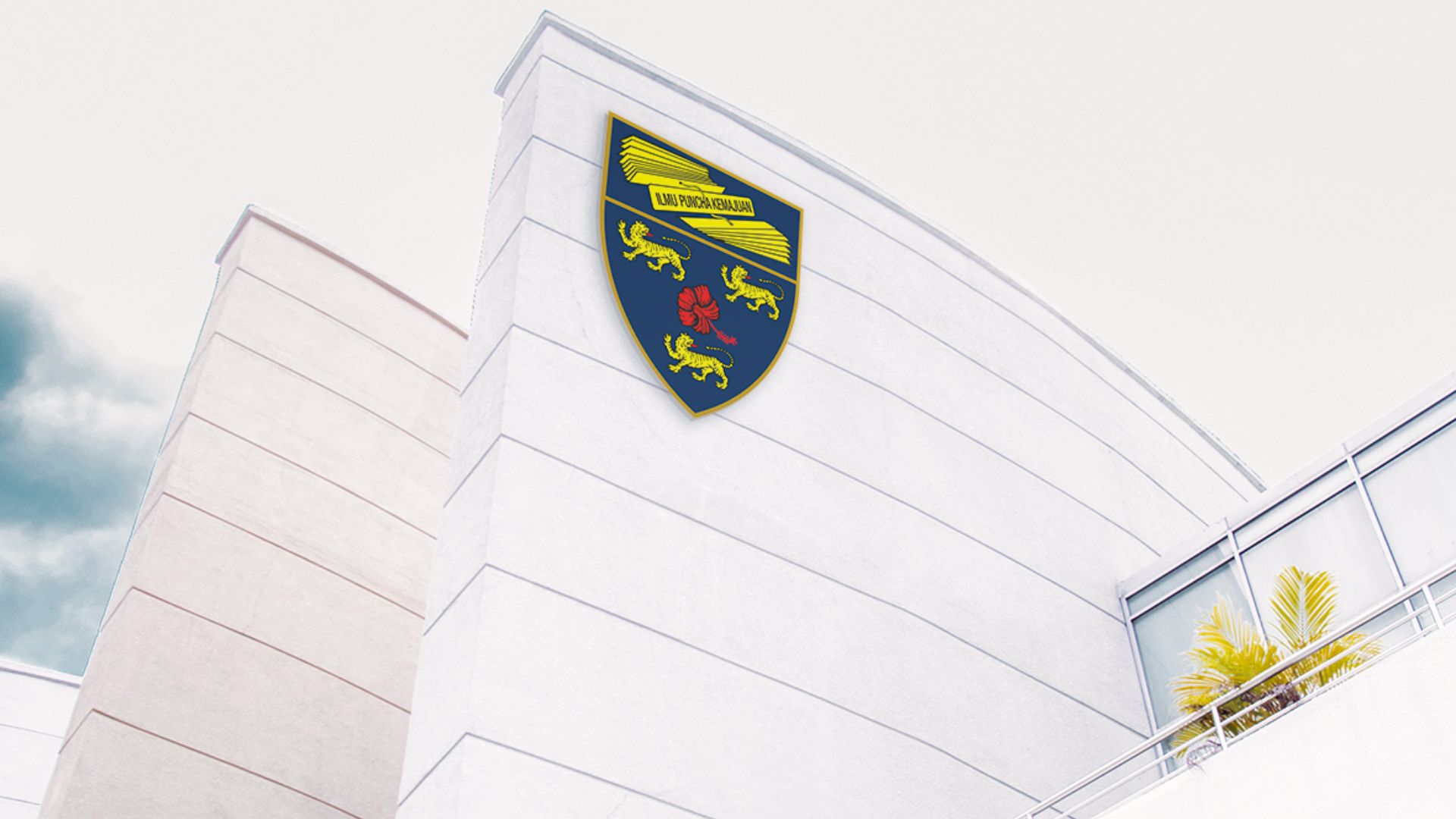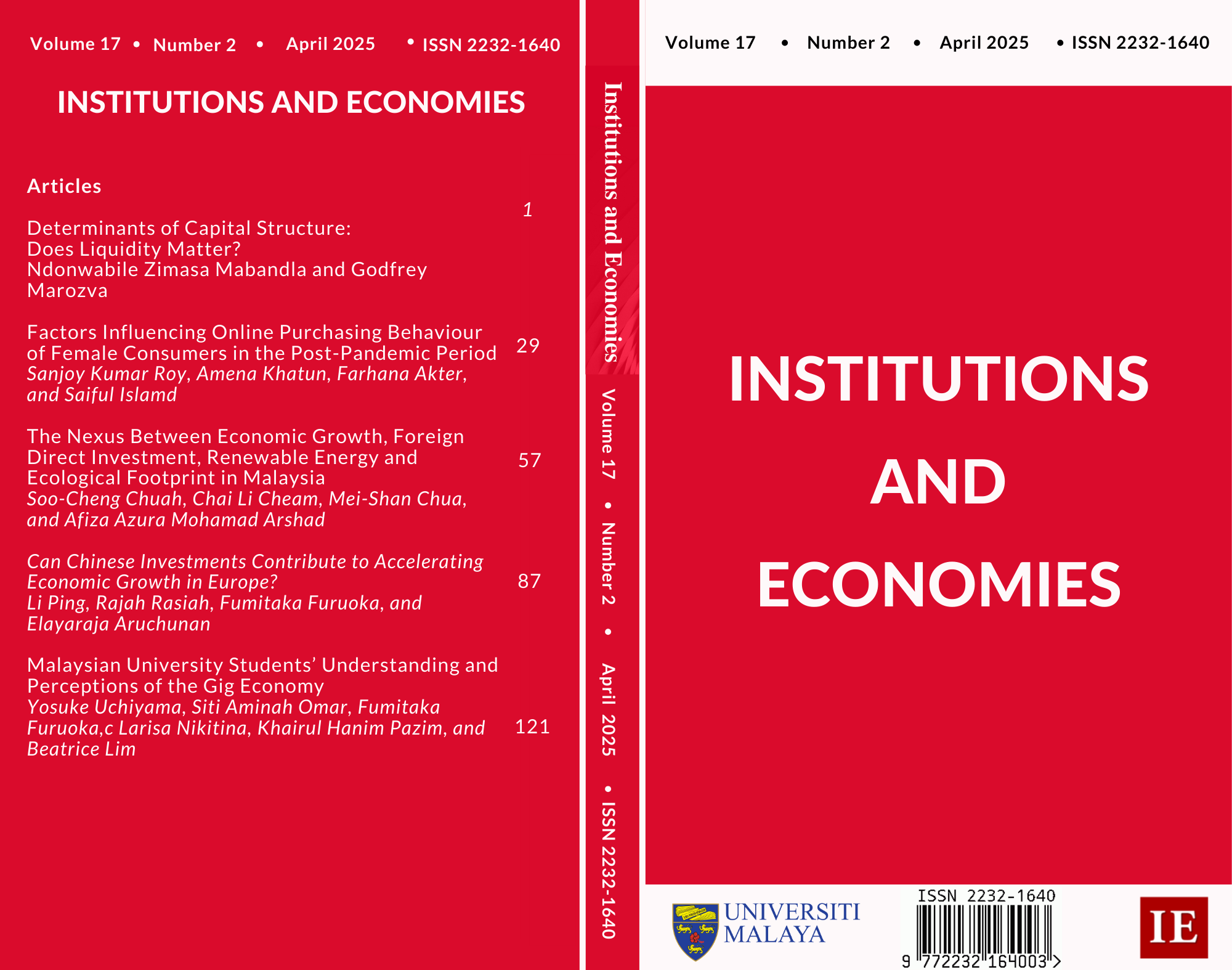The Nexus Between Economic Growth, Foreign Direct Investment, Renewable Energy and Ecological Footprint in Malaysia
Main Article Content
Abstract
The growing human demand for biologically productive land and ocean
areas significantly affects nature’s ability to restore its ecosystems. Therefore, this
study aims to examine the impact of economic growth, foreign direct investment
(FDI), and renewable energy usage on Malaysia’s ecological footprint from 1970 to
2018 using the environmental Kuznets curve model. The data was analysed using unit
root tests, autoregressive distributed lag (ARDL), and the Granger causality test. The
results suggest that increased economic growth and FDI have a negative impact on
environmental quality, both in the short term and the long term. Moreover, a rise in the
utilisation of renewable energy enhances the extent of environmental deterioration. The
analysis further confirms the validity of the environmental Kuznets curve hypothesis,
which suggests that the relationship between economic growth and environmental quality
in Malaysia follows an inverted U-shaped pattern. The results of the Ganger causality
test indicate a unidirectional relationship between economic growth and ecological
footprint, as well as a unidirectional association between ecological footprint and
renewable energy. These findings offer valuable information to policymakers about the
promotion of renewable energy consumption and the impact of foreign direct investment
on the sustainable development of the host country.
Downloads
Article Details
Submission of a manuscript implies: that the work described is original, has not been published before (except in the form of an abstract or as part of a published lecture, review, or thesis); that is not under consideration for publication elsewhere; that its publication has been approved by all co-authors, if any, as well as tacitly or explicitly by the responsible authorities at the institution where the work was carried out. Transfer of copyright to the University of Malaya becomes effective if and when the article is accepted for publication. The copyright covers the exclusive right to reproduce and distribute the article, including reprints, translations, photographic reproductions, microform, electronic form (offline and online) or other reproductions of similar nature.
An author may self-archive the English language version of his/her article on his/her own website and his/her institutions repository; however he/she may not use the publishers PDF version which is posted on www.ijie.um.edu.my. Furthermore, the author may only post his/her version, provided acknowledgement is given to the original source of publication and a link must be accompanied by the following text: The original publication is available at www.ijie.um.edu.my.
All articles published in this journal are protected by copyright, which covers the exclusive rights to reproduce and redistribute the article (e.g. as offprint), as well as all translation rights. No material published in this journal may be reproduced photographically or stored on microfilm, in electronic database, video disks, etc., without first obtaining written permission from the publishers. The use of general descriptive names, trade names, trademarks, etc., in this publication, even if not specifically identified, does not imply that these names are not protected by the relevant laws and regulations.
The copyright owners consent does not include copying for general distribution, promotion, new works, or resale. In these cases, specific written permission must first be obtained from the publishers.

